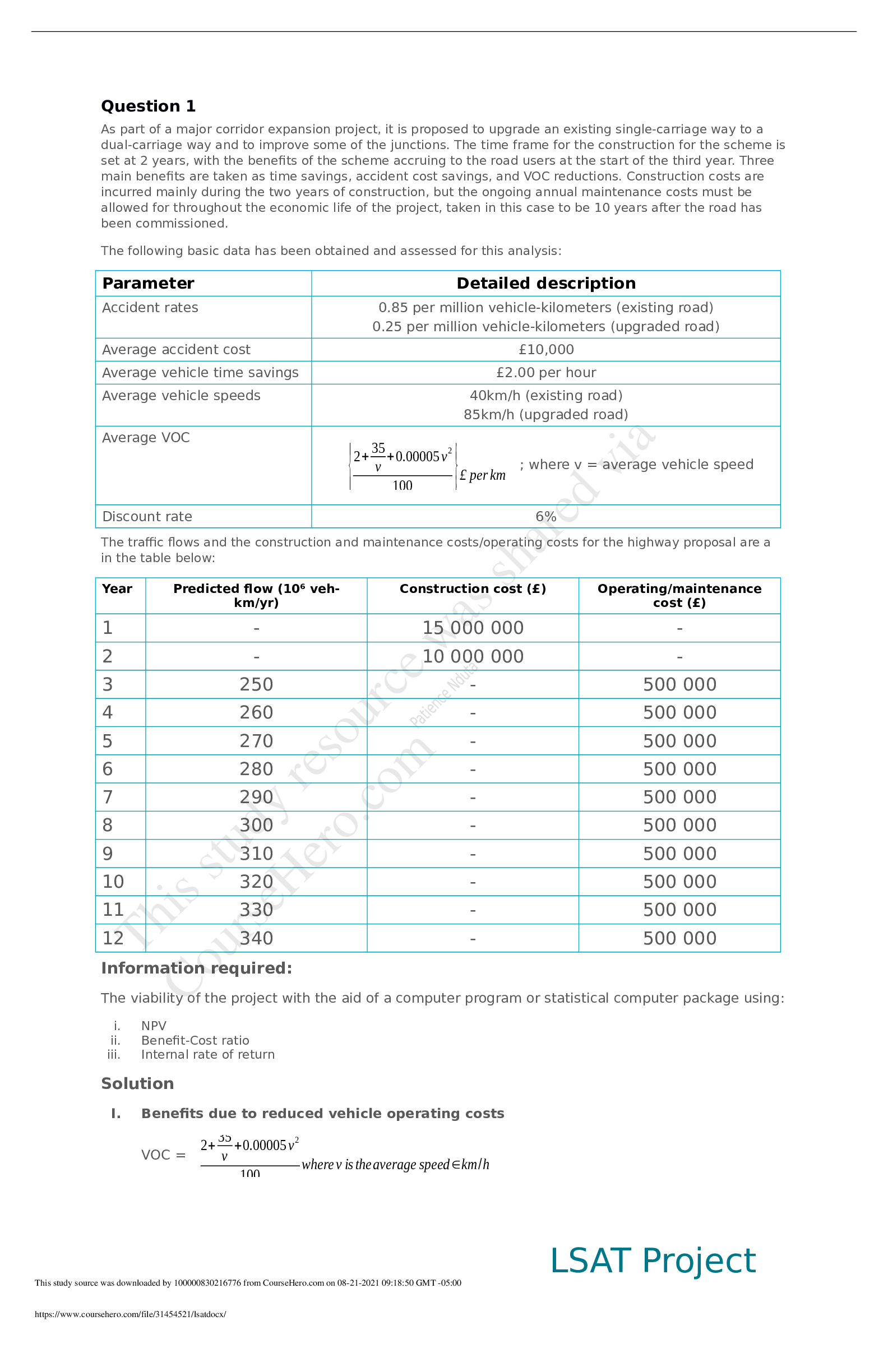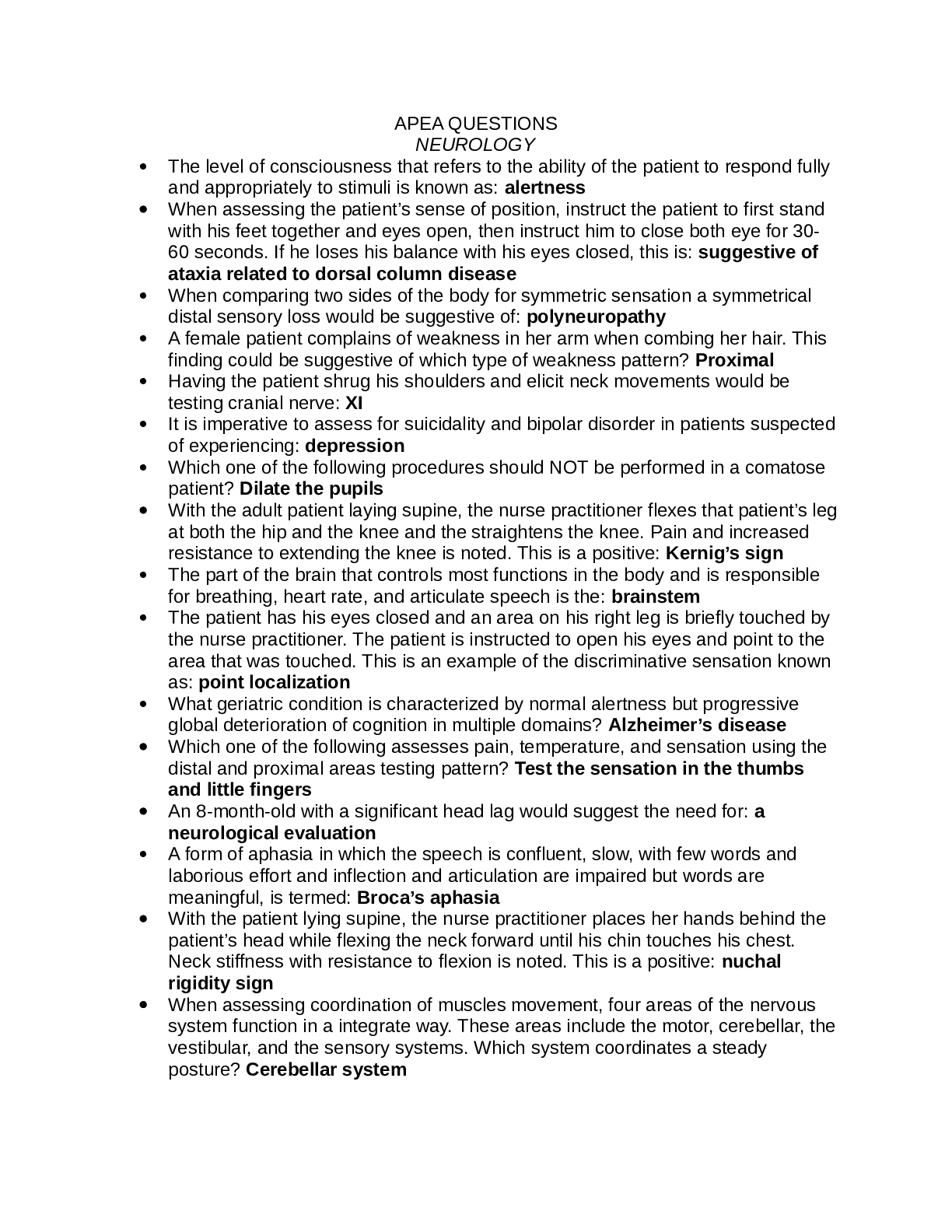Civil Engineering > QUESTIONS & ANSWERS > lsat.docx SOLVED!!! (All)
lsat.docx SOLVED!!!
Document Content and Description Below
Question 1 As part of a major corridor expansion project, it is proposed to upgrade an existing single-carriage way to a dual-carriage way and to improve some of the junctions. The time frame for t... he construction for the scheme is set at 2 years, with the benefits of the scheme accruing to the road users at the start of the third year. Three main benefits are taken as time savings, accident cost savings, and VOC reductions. Construction costs are incurred mainly during the two years of construction, but the ongoing annual maintenance costs must be allowed for throughout the economic life of the project, taken in this case to be 10 years after the road has been commissioned. The following basic data has been obtained and assessed for this analysis: Parameter Detailed description Accident rates 0.85 per million vehicle-kilometers (existing road) 0.25 per million vehicle-kilometers (upgraded road) Average accident cost £10,000 Average vehicle time savings £2.00 per hour Average vehicle speeds 40km/h (existing road) 85km/h (upgraded road) Average VOC { 2+ 35 v +0.00005 v 2 100 }£ per km ; where v = average vehicle speed Discount rate 6% The traffic flows and the construction and maintenance costs/operating costs for the highway proposal are a in the table below: Question 2 A w% increase in downtown parking costs resulted in an f% reduction on downtown auto trips and a g% increase in transit patronage for downtown routes. Derive the expressions for the arc elasticity of auto and transit demand with respect to parking costs. Solution Let p1 and p2 represent the initial and new parking fee, respectively. A1 is the auto travel demand before the parking fee increase, A2 the auto travel demand after the parking fee increase, T1 the transit travel demand before the parking fee increase, and T2 the transit travel demand after the parking fee increase. The percent change in auto use with respect to an increase in parking costs is a direct elasticity, while the percent change in transit use with respect to an increase in parking costs is a cross elasticity: That is; Initial parking price = p1 Final parking price = p2 = (1 + w 100 ¿ p1 Initial transit demand = VT1, Final transit demand = VT2 = (1 + g 100 ¿ VT1 [Show More]
Last updated: 2 years ago
Preview 1 out of 4 pages

Buy this document to get the full access instantly
Instant Download Access after purchase
Buy NowInstant download
We Accept:

Reviews( 0 )
$10.00
Can't find what you want? Try our AI powered Search
Document information
Connected school, study & course
About the document
Uploaded On
Aug 21, 2021
Number of pages
4
Written in
Additional information
This document has been written for:
Uploaded
Aug 21, 2021
Downloads
0
Views
102





.png)


.png)
.png)















